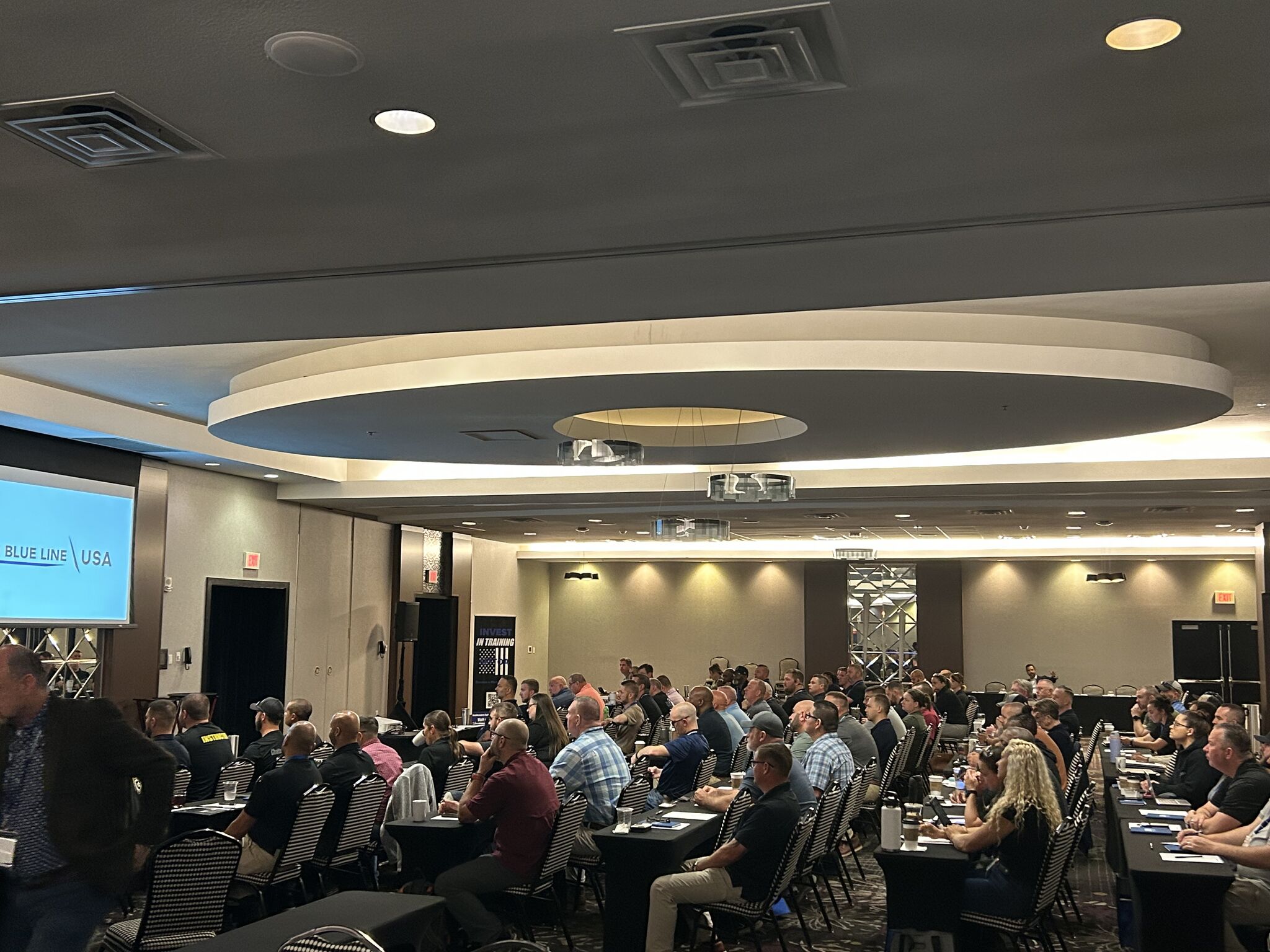Moments in public safety can shift fast. One call feels routine; the next demands clear thinking and calm leadership. In those moments, people—officers, community members, even suspects—look to the individual who appears steady and composed. That presence alone often shapes what happens next.
That’s the foundation of what we call command presence.
What Command Presence Really Means
Command presence is the calm, confident, and professional demeanor that allows an officer or leader to influence a situation through steady authority—not force. It’s the combination of posture, tone, emotional regulation, and ethical behavior that signals credibility long before a word is spoken.
In plain language, command presence means showing up in a way that helps people feel guided rather than threatened. It’s the steady professionalism that reassures others during moments of uncertainty—on calls, in the community, or inside the agency.
Leaders we train often say command presence became one of their strongest tools early in their careers. It’s not about rank. It’s about how you show up, especially when conditions are unpredictable.
Why Command Presence Matters in Law Enforcement
Command presence has real influence because it affects outcomes at every level:
Safety: A leader’s calm presence can lower tension and reduce the chance of escalation.
Voluntary Compliance: Clear, confident direction helps others follow instructions without resistance.
De-escalation: When a leader remains composed, the situation often mirrors that tone.
Public Trust: People remember how they felt in an officer’s presence.
Agency Culture: Younger officers emulate the leaders they watch each day.
In every class we teach, leaders describe moments where their presence—not their volume—changed the direction of an interaction. That impact is powerful.
The Core Elements of Command Presence
Command presence isn’t a single trait; it’s a combination of behaviors that reinforce one another. These foundational elements shape the way others perceive your ability to lead.
Professional Demeanor
Before you speak, people notice your bearing. Professional demeanor includes balanced posture, calm movements, and a squared-away appearance. These details communicate readiness, confidence, and control.
Communication Skills
Command presence relies on clarity, not intensity. Leaders who communicate with steady pacing, clear phrasing, and confident tone build trust more effectively than those who raise their voice.
Good communication is simple: be clear, be calm, be intentional.
Emotional Control
Emotional regulation is one of the most visible components of command presence. Leaders who can slow their breathing, steady their voice, and maintain a neutral tone during stressful moments signal that the situation is manageable.
This skill doesn’t hide emotion—it manages its impact.
Ethical Leadership
True command presence must be rooted in ethics. Respectful behavior, fairness, and integrity give presence its long-term credibility. Leaders who act consistently with their values earn trust that can’t be forced.
Situational Awareness
Command presence requires understanding what is happening around you. Reading people, recognizing risks, and responding with foresight help leaders stay ahead of conflict rather than reacting to it.
How to Have a Commanding Presence (Practical Skills You Can Apply Today)
One of the most common questions we hear from officers is, “How do I build command presence?” The answer isn’t about personality—it’s about practice.
Stand with Calm Authority
Your stance communicates stability. Balanced footing, relaxed shoulders, and controlled movement create an immediate sense of calm. This doesn’t draw attention; it sets a tone.
Speak with Clarity and Intent
Clear, purpose-driven communication strengthens your presence. Short instructions, steady pacing, and intentional pauses help others follow direction without confusion.
Leaders we train often discover that speaking slowly makes them sound more confident—not less.
Project Confident Courtesy
Courtesy builds trust. When leaders treat people with dignity, they gain compliance more effectively and reduce the emotional intensity of a situation.
Confidence and courtesy are not opposites—they reinforce each other.
Control Your Emotions in Real Time
Controlling your emotional response is one of the most impactful parts of command presence. Tactical breathing, mental resets, and neutral language help leaders remain predictable when others are not.
Let Competence Do the Talking
Command presence grows from preparation. Leaders who know their policies, tools, and responsibilities project confidence naturally. Scenario training and repetition build the internal certainty that others can sense. Competence fuels presence.
Examples of Command Presence in Policing
These light, realistic examples show how command presence appears in everyday work.
A Call Begins to Escalate
Two people are shouting in a driveway. An officer approaches with balanced posture, controlled tone, and clear direction. The energy shifts not because the officer takes control forcefully, but because their presence creates stability.
A Traffic Stop Becomes Confusing
A driver is anxious and speaking quickly. Instead of matching the emotion, the officer slows the moment down with steady voice and clear instructions. The driver becomes more focused and cooperative.
Roll Call Before a Tough Shift
A supervisor addresses their team with calm clarity: “Here’s our focus today. Stay connected. Stay aware.” The message is simple, but delivered with presence that shapes team performance.
Community Engagement on a Difficult Day
An officer takes the time to listen fully to a concerned resident. The officer’s steady, respectful demeanor creates trust—even though the conversation began with frustration.
The Psychology Behind Command Presence
Command presence works because human beings naturally respond to certain leadership signals:
- People look for emotional cues during uncertainty.
- Calm behavior creates psychological safety.
- Predictability helps reduce fear.
- Confidence signals competence.
- Ethical behavior reinforces trust.
Presence influences emotion, and emotion influences behavior. That’s why command presence often guides outcomes before a decision is even made.
How Leaders Build Command Presence (Step-by-Step)
Command presence develops through repetition, mentorship, and practical experience. These steps help leaders strengthen it intentionally.
1. Practice under stress. Scenario-based training prepares your body and voice for real-world adrenaline.
2. Drill purposeful communication. Clear, concise phrasing becomes second nature through repetition.
3. Develop emotional regulation tools. Breath control, grounding strategies, and self-awareness matter.
4. Learn from leaders you trust. Many of the leaders we train can name someone whose presence shaped their own.
Command presence is built—not gifted.
Common Misconceptions About Command Presence
A few myths get in the way of growth:
“You have to be intimidating.”
Intimidation erodes trust.
“You need rank.”
Presence begins long before promotion.
“Some people are just born with it.”
Command presence is a learned skill.
“It means being loud.”
Clarity is more effective than volume.
FAQs
What is command presence?
Command presence is the calm, confident, and professional demeanor that helps a leader influence situations through steady authority.
What does command presence mean in policing?
It means projecting leadership that reassures communities, guides behavior, and maintains safety during uncertain moments.
How do you have a commanding presence?
Use steady posture, clear communication, emotional control, and confident courtesy.
Is command presence a good thing?
Yes. It strengthens trust, communication, and leadership effectiveness.
What is an example of command presence?
A leader using calm tone and balanced body language to direct a tense interaction is demonstrating command presence.
Final Thoughts
Command presence isn’t about being the loudest or the most forceful person in the room. It’s about showing up with clarity, steadiness, and care—especially when it matters most. When leaders model calm professionalism, others follow.






